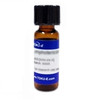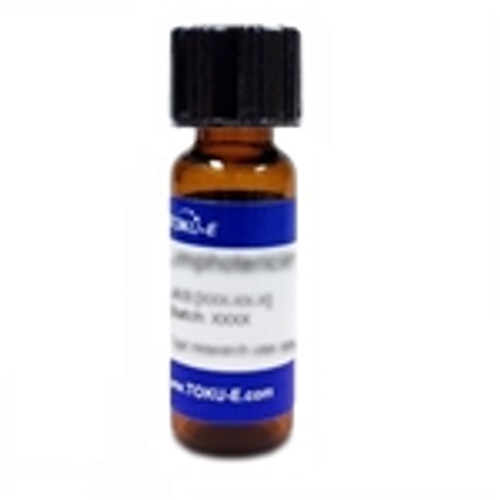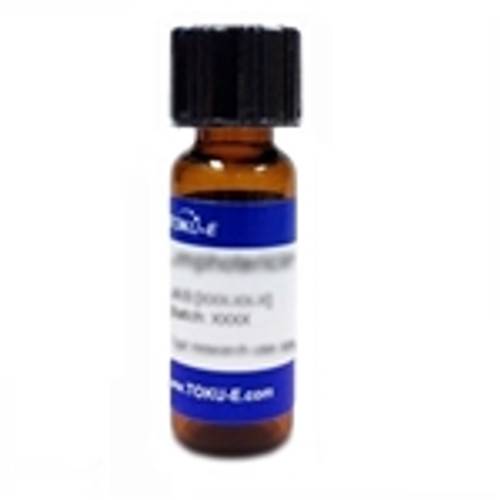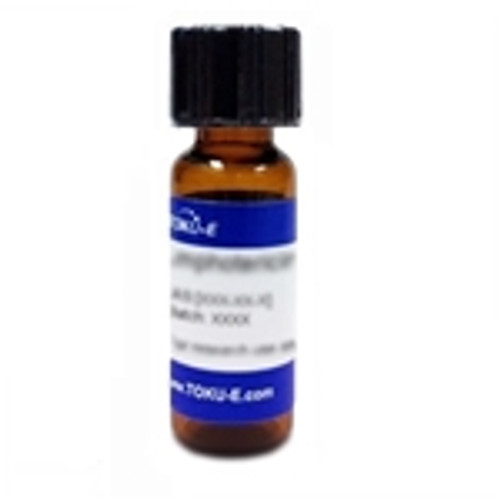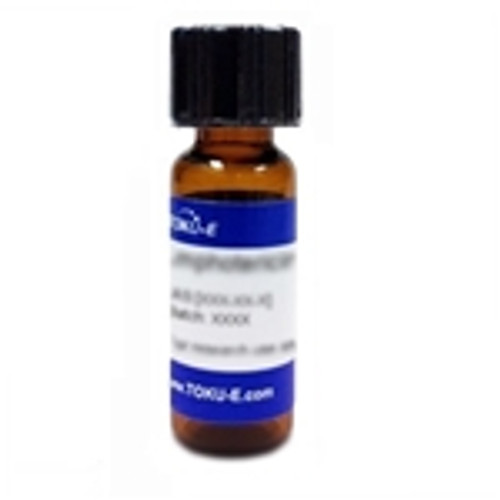Cytochalasin E is one of a family of potent mycotoxins produced by a range of fungi. Despite the common mode of action, there is evidence that individual members display diverse selectivity. Specifically, Cytochalasin E acts as an angiogenesis inhibitor and, unlike other cytochalasins, does not inhibit glucose transport. It displays anti-proliferative activity in vitro in endothelial cells. It can inhibit tumor growth and angiogenesis in vivo. It also has antiviral and antimicrobial properties.
Cytochalasin E is soluble in ethanol, methanol, DMF and DMSO.
We also offer:
- Cytochalasin A (C193)
- Cytochalasin B (C194)
- Cytochalasin C (C195)
- 19,20-epoxycytochalasin C (E048)
- Cytochalasin D (C196)
- 19,20-epoxycytochalasin D (E049)
- Cytochalasin E (C197)
- Cytochalasin H (C198)
- Cytochalasin J (C199)
- 19,20-epoxycytochalasin C (E048)
| Mechanism of Action | All cytochalasins exhibit profound effects on cytoskeletal proteins, resulting in pronounced morphogenic changes in animals and plants. |
| Cancer Applications |
Fungi produce a range of natural products, but none of them have been approved anticancer therapies despite many showing antitumor properties in vitro and in vivo. Reasons could be that fungi do not produce sufficient material for pre-clinical investigation, and they are synthetically challenging (Siwen et al, 2020). Authors screened 16 lichen extracts on human HT-29 colorectal cancer cells and it led them to Pleurosticta acetabulum, a lichen commonly found in tree bark in Europe. Purification of the extract resulted in the isolation of Cytochalasin E, which is responsible for the anti-proliferative activity. Its presence in lichens is reported for the first time. Quantification of Cytochalasin E in different lichen samples using LC-MS showed variations of production and high concentrations were found in the apothecia (Delebassee et al, 2017). |
| Eukaryotic Cell Culture Applications |
In a mouse heart transplant model, isolated mitochondria infusion into heart donors leads to an increase in allograft rejection. Cytochalasin E is an actin polymerization inhibitor and can be used to study mitochondria uptake in mice endothelial cells (bEnd.3), specifically to determine if mitochondrial update is dependent on actin polymerization or rather scavenger receptors. This phagocytosis inhibitor Cytochalasin E prevented mitochondria uptake by endothelial cells (Lin et al, 2019). Cytochalasin E was found to be a potent and selective inhibitor of bovine capillary endothelial (BCE) cell proliferation. It differs from other cytochalasins by the presence of an epoxide. It is a potent antiangiogenic agent (Udagawa et al, 2000). |
| References |
Aldridge DC, Burrows BF and Turner WB et al (1973) The structure of the fungal metabolites cytochalasins E and F. Chem. Commun. 3:551 Lin L et al (2019) Circulating mitochondria in organ donors promote allograft rejection. Am. J. Transplant 19(7):1917-1929 PMID 30761731 Siwen Y et al (2020) Anticancer fungal natural products: Mechanisms of action and biosynthesis, Udagawa T et al (2000) Cytochalasin E, an epoxide containing Aspergillus-derived fungal metabolite, inhibits angiogenesis and tumor growth. J. Pharmacol. Exp. Ther. 294:421 PMID 10900214 |


